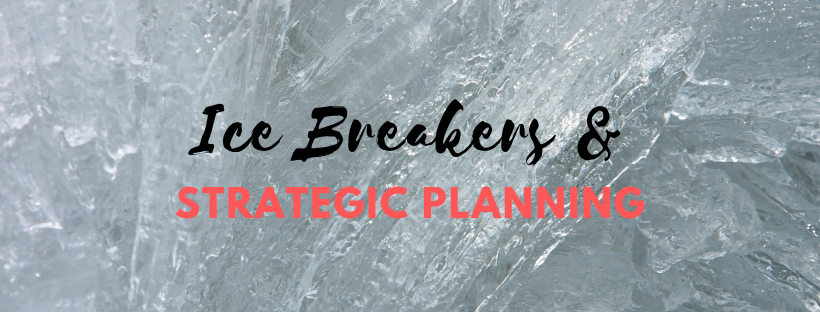
This guest blog is by ELGL member Kevin Knutson with Envisio. Connect with Kevin on LinkedIn and Twitter!
 I’m usually terrible at ice breakers. I’m a nuts and bolts kind of guy and generally don’t like anything that feels gimmicky. During my time in government and as a consultant, I facilitated hundreds of strategic planning sessions for local governments and nonprofits, and in every case, I liked to get to business and get things done.
I’m usually terrible at ice breakers. I’m a nuts and bolts kind of guy and generally don’t like anything that feels gimmicky. During my time in government and as a consultant, I facilitated hundreds of strategic planning sessions for local governments and nonprofits, and in every case, I liked to get to business and get things done.
But around three years ago, I came across an ice breaker (really by accident) that demonstrated their potential value to me. I’ve used it many times since.
Now, this ice breaker probably isn’t appropriate for every situation. It works really well in organizations where the team has a sense of doing something greater than themselves.
So if you work in government, or even with a nonprofit board, feel free to steal it or adapt it for your own strategic planning sessions.
Here’s what happened.
I was invited to run a strategic planning workshop for a city commission that had recently been elected. In this particular government, there were five elected officials and three of them were brand new.
One of the returning members was becoming the new Mayor and the other person that was returning to office had a relationship with the new Mayor because they had served together previously. But otherwise, nobody really knew each other. Kind of an unusual situation.
In the run up to the workshop, I’m thinking “how do I get around the fact that these are complete strangers in a room that now have to make really important decisions together?”
I was discussing the problem with some colleagues when one said, “well, you need an approach that gets all of the agendas out, somehow.” It gave me an idea.
On the day, I walked in and asked the five people to each take five minutes and answer two questions:
- What did you promise to your constituents when you were running for this office? What did you tell them you were going to get done?
- Why (on earth) did you want to be an elected official? What is it that drove you personally to stick your neck out, do all the hard work of running a campaign, raising a ton of money and eventually get elected?
We got gold.
The first person was a brand new elected official. She started talking about how families in her district were facing a certain issue and had come to her asking for help. That one particular issue was what had made her decide to run for office. The next guy followed with a story about the thing that had motivated him to run… and so on.
I didn’t let anyone else talk while each person spoke. That was their time to explain to themselves, and everyone else in the room (there were a bunch of senior members of staff also attending), why they were there.
While they spoke, I made notes on the whiteboard behind me. I started putting keywords into buckets. So if they talked neighborhoods, it all went into that area, transportation went into other, culture, history, etc.
When we were done, I circled those different areas. There were five of them. And guess what?
They perfectly aligned with the current strategic plan.
After that, I was able to walk the group through how the previous commissions had gone through these decision-making processes and had come to the same exact same conclusions they had.
I explained how the difference for them was that their perspective would now be included in the strategic plan. It was up to them to set the policy moving forward and decide how those things would actually be accomplished.
They were super excited and we had a great day.
Why did it work so well? Never once after that, was there any doubt about where people stood. Usually when you go into a planning meeting as a facilitator, you know there are agendas, but nobody will tell each other what they are. You end up asking people pointed questions to try and draw them out.
But when there was no immediate decision to be made, no point to make or deal to close, people just opened up.
That first 25 minutes was more important than everything else that was said the entire day. Now the people in the room saw each other not as rivals but as co-creators, coming together to get something done. They knew where everyone else was coming from and could factor that into their thinking about how they were delivering services.
We had transparency.
This approach could be adapted for elected officials that aren’t brand new as well. The tack I’ve used is to say “You’re all out having coffee with your constituents, you’re knocking on doors, and going to community meetings. What are the top three things you’re hearing from your constituents that are really front of mind for them? What are their top level concerns?”
If you’re working with a nonprofit board, the question becomes “Why did you volunteer to be here? What are your hopes and dreams for this organization?”
So my advice if you’re looking to introduce an ice breaker to your strategic planning session?
Do something substantive.
These are smart people. In my experience, if they even get a sniff of something gimmicky, they’ll skip it.
Find something that launches the group into the discussion for the day and draws them out a little before they’re arguing over positions.
